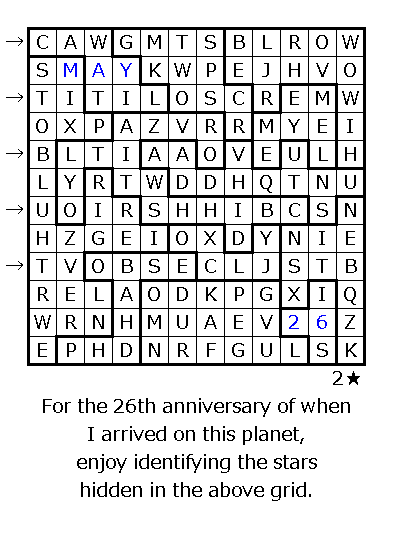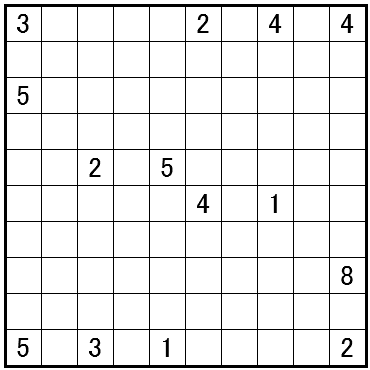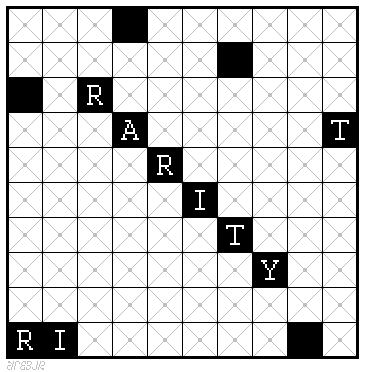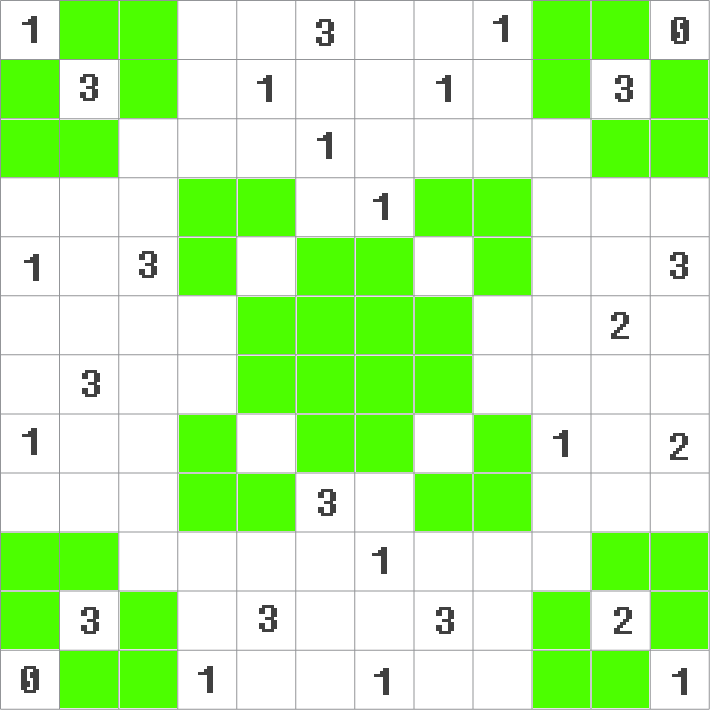I hope you enjoyed the first week with Grant Fikes contributing puzzles. Grant will be a regular author in the future, and has already sent in a lot of outstanding puzzles for The Art of Puzzles. While his best puzzles and his largest puzzles (sometimes one and the same) will be saved for that publication, a lot of fine leftovers will still end up here on a weekly basis. In other words, if you’ve enjoyed what you’ve seen here you’ll be amazed by what is in the book. Still, if you’d like to see some “Giants” from Grant, please check out the three he released last weekend 600 (LITS/”Tetra Firma”), 601 (Shakashaka/”Proof of Quilt”), and 602 (Norinori/”Dominnocuous”).
Who will our next Contributing Puzzlemaster be and when will his or her puzzles first appear? Only time will tell. For now I wanted to announce that the weekly release schedule will be going through a few changes. Since I have been publishing Sudoku and puzzles in five other genres (object placement, number placement, loops, shading, and region division), for most weeks going forward there will now be one puzzle in each of those six areas. Every other week will have a change in types (for example Masyu this week, Slitherlink the next) so there will be some balance in what gets posted. Over time, the genres will cycle through each day of the week so that easier and harder puzzles of all styles appear. That’s the basic plan, but there may be a few other surprises in store.
Finally, since a small number have been asking for more hints on the hidden contest (which remains undiscovered), and since I’ve not been responding privately for the sake of fairness, now seems a good time to narrow the hunt somewhat. While there have been a lot of posts here, from Doctor’s Notes to solving tutorials, this site is primarily about the puzzles. Somewhere in those 60 posts is what you need to find the “+1 puzzle” and possibly win a free book.
Regards, Dr. S.
PS: There will be no “Ask Dr. Sudoku” this week, but if you have any questions you would like answered in a future column, or past puzzles that have appeared here that were not covered that you would like some more insights on, this is the time to inquire. Going forward, I intend the “Asking” to be more active and cover just about anything (from puzzle that use baskets to NCAA tournament brackets). Solving/construction tutorials are interesting, but are not meant to be the only kind of topic.




